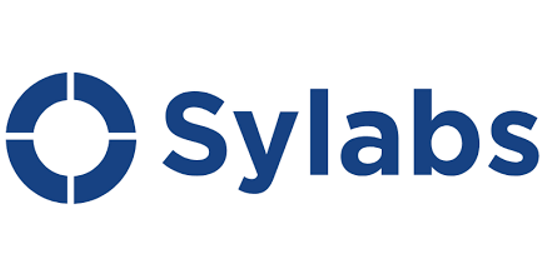Reno, NV – (February 8, 2024) – Sylabs, a provider of tools and services for performance-intensive container technology, announced the release of SingularityCE 4.1.0, the newest iteration of its container solution optimized for HPC environments, including AI/ML, large-scale data projects, and edge computing.
Sylabs said this release represents a significant step forward, enhancing user autonomy, ensuring robust security, and fostering seamless Open Container Initiative (OCI) cross-compatibility. As enterprises increasingly adopt large-scale computing for AI and other complex workloads, this update further underscores SingularityCE’s pivotal role in supporting the evolving needs of enterprise environments, driving the convergence of high-performance and enterprise computing.
The update to SingularityCE introduces the capability to build OCI-SIF images from Dockerfiles directly, significantly bridging the gap between traditional Docker container workflows and Singularity’s advanced HPC-focused environment. This direct build process from Dockerfile to OCI-SIF format streamlines container creation and enhances SingularityCE’s interoperability within the broader container ecosystem. By facilitating an efficient pathway for developers to bring Docker containers into Singularity, this feature stands out as a key advancement in version 4.1.0, reinforcing SingularityCE as a versatile and future-proof tool for complex computing workflows.
“With the introduction of SingularityCE 4.1.0, we’ve taken a significant step forward in streamlining its interoperability,” said Dave Trudgian, Software Engineer at Sylabs and the lead developer within the Singularity ecosystem. “Now, developers can directly build an OCI container from a Dockerfile into an OCI-SIF, streamlining the containerization process. This eliminates the need to first build a container with Docker or Podman and then pull it into OCI-SIF with Singularity or convert a Dockerfile into a Singularity definition file. It’s a direct and efficient pathway for leveraging Dockerfile-based workflows within the Singularity ecosystem, enhancing productivity and simplifying the development process for our users.”
Additionally, SingularityCE 4.1.0 offers a heightened level of user control and customization. The update introduces capabilities for precise management of container layers and OCI credentials, aligning Singularity container technology more closely with complex, automated workflows. This enhancement enables seamless integration of SingularityCE containers into continuous integration and deployment pipelines, which is crucial for organizations managing large-scale operations.
Strengthened Security and Personalization
This new version of SingularityCE enables users to specify custom paths for OCI credentials, improving personalization and security while playing a crucial role in incorporating SingularityCE into CI operations. This feature makes integrating SingularityCE containers into automated build and deployment pipelines easier and more secure. These customizable authentication file paths strengthen security and significantly simplify container creation. Users can now efficiently build highly customized Singularity containers in the OCI-SIF (Singularity Image Format).
Another significant advancement in SingularityCE 4.1.0 is supporting Docker-style Scientific Filesystem (SCIF) containers. This feature is particularly beneficial for workflows that demand a stable, consistent environment — a ‘frozen in time’ approach often required in scientific research and legacy system support. SCIF containers enable the amalgamation of multiple applications into a single, reliable package, which ensures process accuracy and result reproducibility. Such capability aligns with the FAIR principles, promoting workflows that are findable, accessible, interoperable, and reusable. With SCIF, SingularityCE provides a consistent software environment for precise replication of processes and results and adheres to the best practices in data stewardship and scientific computing. This functionality of SingularityCE 4.1.0 is particularly relevant for scenarios necessitating consolidated application packaging, maintaining control, and predictability in advanced computing workflows.
Finally, this new update enhances SingularityCE by introducing the ability to mount container images using FUSE (Filesystem in Userspace) in setuid mode. This development responds to performance challenges and security concerns associated with temporary sandboxes and conventional kernel mounts. SingularityCE 4.1.0 empowers administrators with a safer alternative through FUSE container mounts, offering a viable solution, especially in scenarios where kernel vulnerabilities cannot be quickly addressed. This approach eliminates the need to extract containers to temporary sandbox directories, addressing the significant performance drawbacks commonly encountered with such methods. This capability improves container management’s efficiency and security in complex computing settings.
“The latest update significantly enhances Singularity’s interoperability, bridging the gap with other platforms and fostering a cohesive, customizable workflow for developers across various computing environments,” said Adam Hughes, CTO for Sylabs. “These enhancements not only respond to community needs, making Singularity a versatile tool for two-way translation between Singularity and the wider OCI landscape, but also affirm Sylabs’ commitment to providing reliable, scalable container solutions for the Singularity ecosystem. SingularityCE’s seamless integration across diverse computing environments enables computational scientists and data analysts to operate more effectively. We’re dedicated to supporting the evolving needs of enterprise and HPC users in increasingly complex computing environments.”
For an in-depth look into Singularity 4.1.0 and its innovative features, visit https://github.com/sylabs/




